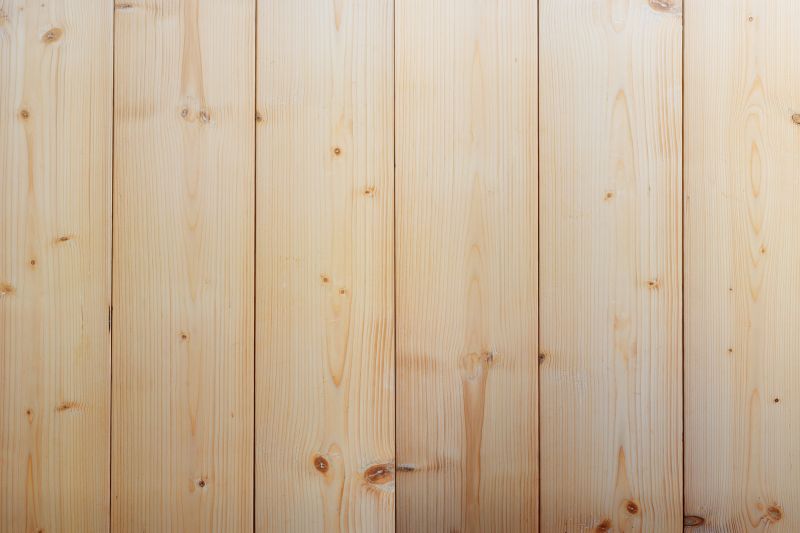Popular Devices For Wood Deck Sanding To Enhance Your Outdoor Space
Discover the most trusted sanders and accessories designed to make your deck sanding tasks efficient and effective.
 Selecting the right products for wood deck sanding is essential for achieving smooth, even surfaces and preparing decks for finishing or staining. The process typically involves removing old paint, stain, or rough patches, which can be effectively done with a variety of sanding tools and accessories. When choosing products, it is important to consider the type of wood, the extent of surface imperfections, and the desired finish quality. Proper sanding not only enhances the visual appeal of a deck but also helps prolong its lifespan by eliminating splinters and preventing decay.
Selecting the right products for wood deck sanding is essential for achieving smooth, even surfaces and preparing decks for finishing or staining. The process typically involves removing old paint, stain, or rough patches, which can be effectively done with a variety of sanding tools and accessories. When choosing products, it is important to consider the type of wood, the extent of surface imperfections, and the desired finish quality. Proper sanding not only enhances the visual appeal of a deck but also helps prolong its lifespan by eliminating splinters and preventing decay.
Top Overall Option
Multi-Grit Orbital Sander with Dust Collection
This versatile orbital sander offers multiple grit settings, allowing for efficient removal of old finishes and smooth finishing. Its dust collection system helps keep the workspace clean, reducing airborne dust and improving visibility during sanding. Ideal for large deck surfaces, it provides consistent results and ease of use, making it a popular choice for DIY enthusiasts and professionals alike.
Types of Products For Wood Deck Sandings
Orbital Sanders
Designed for smooth, even sanding with minimal effort, orbital sanders are suitable for large deck surfaces and finishing work.
Belt Sanders
Ideal for heavy material removal and rough shaping, belt sanders handle extensive prep work effectively.
Detail Sanders
Compact and precise, detail sanders are perfect for tight corners and intricate areas on decks.
Hand Sanding Blocks
Manual sanding blocks provide control for detailed work and finishing touches on smaller areas.
Abrasive Discs and Pads
Available in various grits, these are used with power tools for efficient surface preparation.
Sandpaper Sheets
Flexible and versatile, sandpaper sheets are suitable for hand sanding and small touch-up jobs.
Sanding Sponges
These sponges conform to surfaces and are useful for smoothing uneven areas and edges.
Wire Brushes
Effective for removing stubborn paint or rough patches before sanding begins.
Power Detail Sanders
Compact tools for precise sanding in tight or hard-to-reach areas on decks.
Vibrating Sanders
Lightweight and easy to maneuver, suitable for finishing or light sanding tasks.
Popular Choices
Offering convenience and portability, cordless orbital sanders are favored for deck projects without power cords.
Known for their versatility, dual-action sanders combine orbital and random motion for smooth finishes.
Preferred for extensive prep work, heavy-duty belt sanders handle coarse materials efficiently.
Compact and easy to handle, ideal for detailed sanding in tight deck corners.
Popular for their adaptability, these sponges conform to various surfaces for smooth results.
Easy to attach and remove, these discs come in a variety of grits for efficient sanding.
Useful for light sanding and finishing, especially in detailed or hard-to-reach areas.
Versatile tools capable of sanding, cutting, and scraping, suitable for detailed deck work.
Effective for removing old paint or stubborn debris before sanding begins.
Different sanding products cater to specific needs, from coarse abrasives for initial material removal to fine grits for finishing touches. Power sanders such as orbital, belt, or detail sanders are popular for their efficiency and ease of use, especially on larger surfaces. Hand sanding tools remain valuable for detailed work and tight corners where power tools might not reach comfortably. Additionally, abrasive discs, pads, and sheets come in various grits, allowing users to customize their approach based on the deck's condition.
The choice of abrasives and tools can significantly influence the quality of the sanding process. Using the appropriate grit sequence ensures effective material removal without damaging the wood. For example, starting with a coarse grit to remove old finishes and then progressing to finer grits for a smooth surface is a common practice. Proper safety gear, such as masks and eye protection, should be used during sanding to prevent inhalation of dust and debris. Ultimately, investing in the right products and techniques can make deck sanding more manageable and produce professional-looking results.
Key Buying Considerations
- Type of sanding tool suitable for the project size and detail level
- Grit range of abrasives to match the surface condition and desired finish
- Power source preference, such as corded or cordless options
- Dust collection features to maintain a cleaner workspace
- Ergonomics and weight for comfortable handling during extended use
- Compatibility of abrasive discs and pads with the selected tools
- Ease of changing and attaching abrasive accessories
- Noise levels and vibration for user comfort
- Durability and build quality of the sanding equipment
- Availability of replacement parts and accessories
- Budget considerations without compromising essential features
- Safety features such as vibration control and dust containment
- Size and maneuverability for reaching tight or intricate areas
- User reviews and ratings for real-world performance insights
- Brand reputation and warranty options
This content contains affiliate links. We may earn a commission if you purchase through these links, which helps support our work without affecting the recommendations provided.
